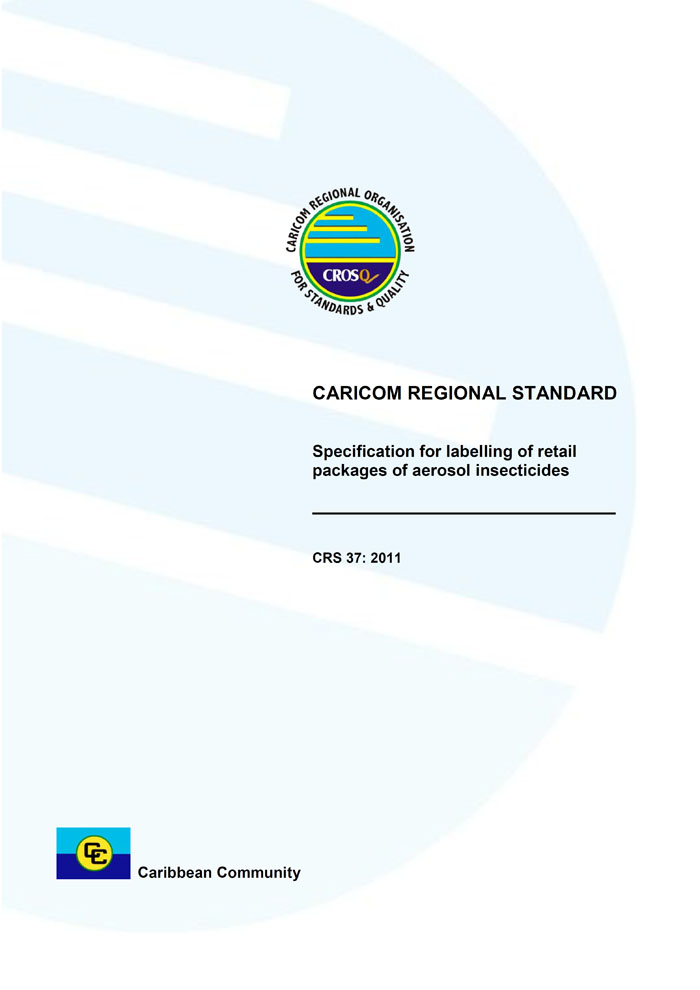
In order to promote public education and public safety, equal justice for all, a better informed citizenry, the rule of law, world trade and world peace, this legal document is hereby made available on a noncommercial basis, as it is the right of all humans to know and speak the laws that govern them.

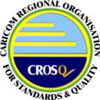
CARICOM Regional Organisation for Standards and Quality (CROSQ)
2nd Floor Nicholas House
29 & 30 Broad Street
Bridgetown, St Michael
Barbados
T: 246.622.7670 | F: 246.622.7678
Website: http://www.crosq.org
© CROSQ 2011 – All rights reserved
Unless otherwise specified, no part of this publication may be reproduced or utilized in any form or by any means, electronic or mechanical, including photocopying and microfilm, without permission.
CRS 37: 2011
CARICOM Regional Organisation for Standards and Quality (CROSQ)
2nd Floor, Nicholas House
29 & 30 Broad Street
Bridgetown, St. Michael
Barbados
T: 246.622.7670 | F: 246.622.7678
Website: http://www.crosq.org
© CROSQ 2011 – All rights reserved. No part of this publication is to be reproduced without the prior written consent of CROSQ.
ISBN 978-976-8234-28-5
ICS 13.300
| AMENDMENT NO. | DATE OF ISSUE | TEXT AFFECTED |
|---|---|---|
This CARICOM Regional Standard was prepared under the supervision of the Regional Technical Committee (RTC1) for Labelling (hosted by the CARICOM member state Jamaica) which at the time comprised the following members:
| Members | Representing |
|---|---|
| Mr. Wayne Stewart (Chairperson) | Dunlop Corbin Communications Ltd. |
| Mr. Roy Banarsee | Summit Marketing Ltd. |
| Ms. Lehonie Francis | GraceKennedy Ltd. |
| Mr. Pash Fuller | Consumer Affairs Commission |
| Ms. Yvonne Haynes | Red Stripe Ltd. |
| Ms. Ingrid Hyman | HD Hopwood & Company Ltd. |
| Mr. Boswell Ivey | Mona School of Business, The University of the West Indies, Mona |
| Ms. Roxanne Miller | DunnCox Attorneys-At-Law |
| Ms. Audrey Morris | Caribbean Food & Nutrition Institute |
| Mr. Rolando Parkes | Bureau of Standards Jamaica |
| Mr. Ryan Strachan | Jamaica Manufacturers’ Association |
| Mrs. Vonetta Nurse Thompson (Technical Secretary) | Bureau of Standards Jamaica |
| Foreword | 1 | ||
| 1 | Scope | 2 | |
| 2 | Terms and definitions | 2 | |
| 3 | Labelling | 4 | |
| 3.1 | General | 4 | |
| 3.2 | Terms to be avoided | 5 | |
| 3.3 | Presentation of information | 5 | |
| 3.4 | Warning marks and warning phrases | 5 | |
| Annex A (normative Standardized warning phrases | 8 | ||
| List of tables | |||
| Table 1 — Approved warning marks | 6 | ||
| Table 2 — Colour codes applicable to aerosol insecticides of hazard classes II, III, IV | 7 | ||
| List of figures | |||
| Figure 1 — Warning mark for flammable gas | 6 | ||
| Figure 2 — Warning mark for harmful or irritant | 6 | ||
| Figure 3 — Minimum dimensions for warning marks | 6 | ||
This CARICOM Regional Standard has been prepared to set the labelling requirements for aerosol insecticides sold in the Caribbean Community.
This standard has been prepared and issued by the CARICOM Regional Organisation for Standards and Quality (CROSQ).
It was approved by the Thirty-Second Meeting of the Council for Trade and Economic Development (COTED) on 3-4 May 2011.
All manufacturers, importers, distributors and other entities engaged in the production and or trade of retail packages of aerosol insecticides within any Member State of the Caribbean Community shall comply with the requirements of this standard.
In the development of this standard, assistance was derived from the following:
This standard specifies the labelling requirements for aerosol insecticides in pressurized dispensers intended for household use.
For the purposes of this standard, the following terms and definitions shall apply.
any document providing specifications, instructions and or information on the use of the aerosol insecticide which is described on or supplied with the package of the aerosol insecticide
any chemical substance, which, when included in the aerosol insecticide, is claimed to be responsible for the stated function of the product
full postal address, including telephone number and or e-mail address, of the principal place of business or registered office of the manufacturer, re-packager or distributor of the aerosol insecticide
non-refillable receptacle made of metal, glass or plastic and containing a gas, compressed, liquefied or dissolved under pressure, with or without a liquid, paste or powder, and fitted with a release device allowing the contents to be ejected as solid or liquefied particles in suspension in a gas, as a foam, paste or powder, or in a liquid or gaseous state
either:
entity engaged in the selling of the aerosol insecticide
NOTE The manufacturer may be the distributor of the product.
liquid having a flash point of not more than 93 °C
lowest temperature (corrected to a standard pressure of 101.3 kPa) at which the application of an ignition source causes the vapours of a liquid to ignite under specified test conditions
2chemical composition which, if inhaled, ingested or absorbed, may pose health risks to humans and animals
any potential harm or risk to human and or animal health which may arise when the aerosol insecticide is handled, used or stored
any substance that, by itself or in combination with other substances, represented or used for destroying or controlling insects
NOTE It does not include any antiseptic, disinfectant, drug or preservative used in foods in accordance with a product standard.
chemical composition which through immediate, prolonged and or repeated contact, can cause inflammation
mark, symbol, device, imprint, stamp, brand, ticket or tag applied to, placed on, sold with, distributed with, and referring to any aerosol insecticide or package containing aerosol insecticide
that part of a label normally intended to be presented to the consumer or intended to be most conspicuous to the consumer, regardless of the shape or size of the container, at the time when the aerosol insecticide to which the label relates is offered or exposed for sale
entity actually engaged in, or responsible for manufacturing the aerosol insecticide
any receptacle, container, wrapper, box, confining band or card in or on which aerosol insecticide is sold
NOTE This does not include package liners, shipping containers or any other wrapping or box not customarily displayed to the consumer or purchaser at the point of retail sale.
where there is a change in the product that has resulted in a change in the Brussels Tariff Nomenclature (BTN) number or where there is no change in the BTN number but the product has undergone a significant process
person, officer or authority administering a law on the labelling, manufacturing, importation, transportation, storage, use, sale, advertising or disposal of aerosol insecticides.
3recognizable symbol designed to give an indication of the effect of a hazardous material
word, phrase or phrases accompanying each warning mark
NOTE The warning mark with its accompanying warning phrase(s) indicates the kind and degree of hazard of the aerosol insecticide which the user or handler is likely to encounter.
The labels on all the retail packages of aerosol insecticides that are offered for sale or sold shall comply with the following requirements:
EXAMPLE “This container is pressurized. Do not puncture or incinerate even when empty.”
The information required in 3.1.1 shall be in the official language(s) of the country in which the aerosol insecticide is being sold.
Instructions in different languages shall be separate from those in the official language of the country in which the aerosol insecticide is being sold.
The information required in 3.1.1 shall be included in any instructions which accompany the aerosol insecticide.
EXAMPLE booklet, pamphlet
The safety information and first aid instructions required in 3.1.1 shall be given in the most appropriate of the standardized phrases set out in Annex A. The manufacturer may provide additional information on the label.
Words such as “SAFE”, “HARMLESS”, “NON-TOXIC”, “NON-POISONOUS” or “NON-INJURIOUS” or any such words or phrases in respect of risks to humans, animals or plants, either with or without qualifying phrases such as “when used as directed”, shall not be used.
Superlatives such as “the best”, “most effective”, “superior control” or “unrivalled” shall not be used.
The label shall be firmly affixed to the container and be located in a position such that it shall not be removed or damaged when the container is opened.
The minimum print size of label information shall be 2 mm (font size 8) and that of the bold print shall be 3 mm (font size 11).
The main panel of the label and any accompanying instructions applying to every retail package of aerosol insecticide shall carry the warning marks incorporating warning phrases, as detailed in Figure 1 and Figure 2, and meet requirements stated in 3.4.2 to 3.4.4.
5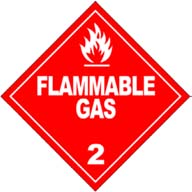
Figure 1 — Warning mark for flammable gas
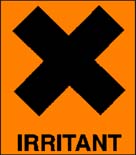
Figure 2 — Warning mark for harmful or irritant
Warning marks shall be conspicuously prominent as stated in 3.4.5 and shall be in accordance with the recommendations stated in Table 1.
| Figure | Hazard statement | Symbol | Border | Background |
|---|---|---|---|---|
| 1 | Flammable gas | Flame, text, numbers | Black or white | Red (Pantone Colour No. 186U) |
| 2 | Harmful or irritant | X, text, numbers | Black or white | White or contrasting background |
All warning marks in the same label or in the accompanying instructions shall be of the same dimensions and shall be not less than 10 mm × 10 mm as illustrated in Figure 3.
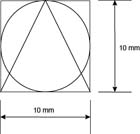
Figure 3 — Minimum dimensions for warning marks
NOTE The dimensions indicated above do not include the warning phrase.
6Where two or more warning marks are to be used, they shall be printed in close proximity to each other.
NOTE The use of rhomboid surround for warning marks instead of the square surround is optional and acceptable.
The warning marks incorporating the warning phrases on every label or accompanying instructions shall be conspicuously prominent by its size and colour. The height of each letter shall not be less than 2.7 mm.
The corresponding hazard warning colour band shall be placed at the bottom of the label, and shall not be less than 15 % of the label area.
The colour code of the hazard warning colour band shall be based on the hazard class of the formulation, as shown in Table 2.
| Hazard class | II | III | IV |
|---|---|---|---|
| Warning phrase | Danger | Caution | Caution |
| Colour code | Pantone yellow (Colour No. 109U) | Pantone blue (Colour No. 285U) | Pantone green (Colour No. 335U) |
(normative)
Where applicable, the following phrases shall be used to describe the nature of risk of the aerosol insecticide to users:
Where applicable, the following phrases shall be used to describe recommended safety precautions for the safe use of aerosol insecticides:
Where applicable, the following phrase shall be used to describe the nature of risk of the aerosol insecticide to the environment: “Toxic to aquatic life birds, wildlife and plants.”
NOTE 1 The labels of aerosol insecticides should contain only essential information concisely expressed. The number and length of phrases should be kept to a minimum, consistent with clarity and purpose.
NOTE 2 The aim in using standardized phrases is to ensure uniformity of warning when they appear on labels of differently formulated products presenting similar risks.
NOTE 3 Standardized phrases are intended to assist in the selection of the correct words to express the nature of the risk and safety precautions to the user.
NOTE 4 The use of standardized phrases should be kept to a minimum so as to maintain their effectiveness.
9
The CARICOM Regional Organisation for Standards and Quality (CROSQ) was created as an Inter-Governmental Organisation by the signing of an agreement among fourteen Member States of the Caribbean Community (CARICOM). CROSQ is the regional centre for promoting efficiency and competitive production in goods and services, through the process of standardization and the verification of quality. It is the successor to the Caribbean Common Market Standards Council (CCMSC), and supports the CARICOM mandate in the expansion of intra-regional and extra-regional trade in goods and services.
CROSQ is mandated to represent the interest of the region in international and hemispheric standards work, to promote the harmonization of metrology systems and standards, and to increase the pace of development of regional standards for the sustainable production of goods and services in the CARICOM Single Market and Economy (CSME), and the enhancement of social and economic development.
CROSQ VISION:
The premier CARICOM organisation for the development and promotion of an Internationally Recognised Regional Quality Infrastructure; and for international and regional harmonized CARICOM Metrology, Standards, Inspection, Testing and Quality Infrastructure
CROSQ MISSION:
The promotion and development of standards and standards related activities to facilitate international competitiveness and the sustainable production of goods and services within the CARICOM Single Market and Economy (CSME) for the enhancement of social and economic development
10 11